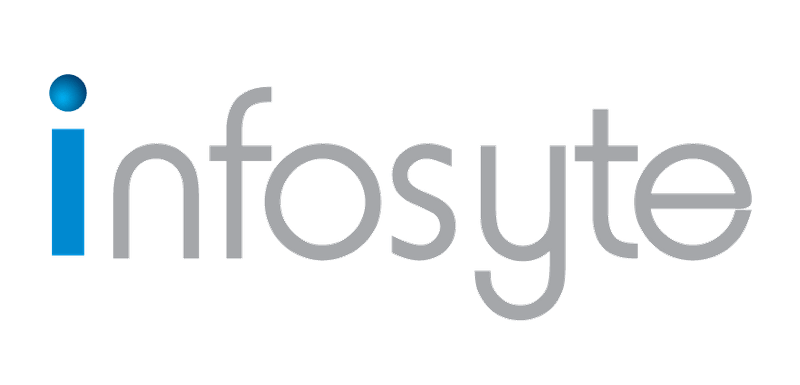Introduction
In today’s digital age, we rely on technology more than ever. From online shopping to banking and social media, our personal and professional lives are intertwined with the internet. While technology has made our lives easier, it has also created new risks and vulnerabilities. Cybercriminals are constantly finding new ways to exploit weaknesses in our digital systems, putting our personal information and sensitive data at risk. This is where cybersecurity comes in.
Cybersecurity refers to the practice of protecting digital devices, networks, and sensitive data from unauthorized access, theft, or damage. Cybersecurity measures range from simple password protection to complex encryption and multi-factor authentication. This article will explore the importance of cybersecurity, common threats, and best practices for protecting your online world.
Why Cybersecurity is Vital: Protecting Your Digital World
Cybersecurity is essential in today’s digital world for several reasons:
1. Protecting Personal and Sensitive Information
One of the main reasons why cybersecurity is essential is to protect personal and sensitive information. Cybercriminals can use various tactics to steal this information, such as phishing, social engineering, or hacking. This data can include financial information, personal identification details, or medical records. If this information falls into the wrong hands, it can lead to identity theft, financial losses, or even blackmail. We can protect our personal and sensitive information from cyber threats by implementing cybersecurity best practices, such as strong passwords and encryption.
2. Ensuring Business Continuity
Cyber attacks can have severe consequences for businesses. A cyber attack can disrupt business operations, resulting in financial losses, reputation damage, and legal consequences. Cybercriminals can also steal sensitive business information or customer data, leading to further consequences. By implementing cybersecurity measures, businesses can ensure the continuity of operations and protect their assets from cyber threats.
3. Maintaining privacy
Privacy is a fundamental right that we should all be entitled to. However, with the increasing amount of personal and sensitive data being shared online, it can be challenging to maintain privacy. Cybercriminals can use various tactics to access our online activities, such as tracking our browsing history or monitoring our emails. We can maintain our privacy online by implementing cybersecurity measures, such as using a virtual private network (VPN).
4. Protecting National Security
Cybersecurity is not just a concern for individuals and businesses but also national security. Governments and military organizations use computer systems to store and share sensitive information. A cyber attack on these systems can have severe consequences, such as compromising national security or disrupting essential services. By implementing cybersecurity best practices, governments can protect their critical infrastructure and ensure national security.
5. Preventing Cyber Crime
Cybercrime has become an increasingly prevalent issue in today’s digital world. Cybercriminals use tactics to steal personal and sensitive information, disrupt business operations, or compromise national security. By implementing cybersecurity measures, we can prevent cybercrime and ensure that cybercriminals are held accountable for their actions.
6. Maintaining trust
Trust is a critical component of our online world. We rely on online services to conduct our daily activities, such as banking, shopping, or communication. We can maintain trust in these online services by implementing cybersecurity measures and protecting our personal and sensitive information.
Common Cybersecurity Threats
Cybercriminals use various tactics to exploit vulnerabilities in computer systems and gain access to sensitive information. Therefore, it is essential to understand the common cybersecurity threats that exist so that we can take the necessary measures to protect ourselves.
1. Malware
Malware is any software designed to harm or exploit computer systems. This includes viruses, trojans, and spyware. Malware can be installed on a computer through various means, such as email attachments, infected software downloads, or malicious websites. Once installed, malware can damage computer systems, steal sensitive information, or provide cybercriminals with access to the system.
2. Phishing
Phishing is a common cyber attack that involves tricking individuals into providing sensitive information. Cybercriminals use tactics to make their emails or messages appear legitimate, such as creating fake websites or impersonating trusted individuals. Once the victim provides their information, the cybercriminal can use it to steal their identity, commit financial fraud, or access their computer systems. One famous example is recent spear phishing on Ukraine.
3. Ransomware
Ransomware is malware designed to block computer system access until a ransom is paid. Cybercriminals typically install ransomware through email attachments or malicious software downloads. Once the ransomware is installed, it can encrypt files or lock the victim out of their computer system. The victim must then pay a ransom to regain access to the system. The ransom payment typically uses bitcoin to prevent leaving any trail from enforcement agencies to trace them.
4. Social Engineering
Social engineering is using psychological manipulation to trick individuals into divulging sensitive information. Cybercriminals use various tactics to exploit human behaviour, such as creating a sense of urgency or trust. Social engineering can occur through various means, such as phone calls, email, or social media.
5. DDoS Attacks
A Distributed Denial of Service (DDoS) attack is a type of cyber attack that involves overwhelming a computer system with traffic. Cybercriminals typically use a botnet, a network of infected computers, to launch a DDoS attack. The attack can cause a website or server to become unavailable, disrupting business operations or online services. Examples include The GitHub Attack in 2018, Hong Kong DDoS Attack in 2014, CloudFlare DDoS Attack in 2014 and more.
6. Insider Threats
Insider threats refer to cyber attacks perpetrated by individuals with authorized access to computer systems. This can include employees, contractors, or third-party vendors. Insider threats can be intentional or unintentional, resulting in the theft of sensitive information or disruption of business operations.
Best Practices for Cybersecurity: Protecting Yourself and Your Business
1. USE STRONG AND UNIQUE PASSWORDS
Passwords are the first line of defence against cyber threats. Use strong and unique passwords for each account and enable multi-factor authentication when possible. A strong password should be at least eight characters long and include a mix of upper and lower-case letters, numbers, and symbols. Avoid using easily guessable information such as birthdates or names. Instead, consider using a password manager to create and store complex passwords.
2. Keep Software Updated
Software updates often include security patches that fix known vulnerabilities. Therefore, keeping the software updated to the latest version is essential. Regularly update your operating system, web browser, and any installed applications. Enable automatic updates when possible to always use the latest software version.
3. Backup Data Regularly
Backing up data is critical to ensure that you can recover during a cyber attack or other disasters. Regularly back up your data to a secure location such as an external hard drive or cloud storage. Test your backups to ensure that you can restore your data if needed. Use tested strategy 3,2,1 rules. You need to have three copies of your data i.e. production data, and two backup copy. Two refer to your backup copy should reside in two different media i.e tape or different storages, and one refers to one of the backup copy should be stored offsite and not reside in the same location as the first copy of the backup.
4. Implement Security Measures
Implement security measures such as firewalls, antivirus software, and intrusion detection systems to prevent unauthorized access to your systems. Use encryption to protect sensitive data such as financial information or personal data. Regularly scan your systems for vulnerabilities and take appropriate action to address any issues.
5. Train Employees on Cybersecurity Best Practices
Employees are often the weakest link in the cybersecurity chain. Cybercriminals use social engineering tactics to trick employees into revealing sensitive information or downloading malware onto their devices. Therefore, it is essential to train employees on cybersecurity best practices. Training should include identifying common cyber threats, recognizing suspicious emails, creating strong passwords, and reporting any suspicious activity.
6. Use User Training and Awareness
User training and awareness are critical components of cybersecurity. Educate users about the risks and best practices for cybersecurity. Identify common cyber threats, such as phishing, malware, and ransomware. Recognize suspicious emails, links, and attachments. Create strong and unique passwords, and enable multi-factor authentication when possible. Use encryption to protect sensitive data. Back up data regularly to prevent data loss. Report any suspicious activity or security incidents immediately.
User awareness should be an ongoing effort, including regular training sessions, newsletters, and other communication channels. By educating users, individuals and organizations can reduce the risk of cyber-attacks and protect sensitive information.
7. Have a Cybersecurity Plan in Place
Develop a cybersecurity plan that outlines the steps you will take during a cyber attack. The plan should include procedures for reporting and containing incidents, notifying affected parties, and recovering data. Regularly review and update your plan to ensure that it remains effective.
Conclusion
In conclusion, cybersecurity threats are constantly evolving and becoming more sophisticated, making it crucial for individuals and organizations to stay informed and take necessary steps to protect their digital assets. To mitigate these risks, staying up-to-date with the latest cybersecurity threats and implementing best practices such as using strong passwords, keeping software updated, and avoiding suspicious emails and websites is important. It is also essential to invest in security training to educate employees on how to identify and prevent cyber attacks. By taking these measures, we can reduce the risk of cyber-attacks and protect our sensitive information. Remember, cybersecurity is everyone’s responsibility, and it is up to all of us to play our part in creating a safe and secure digital world.
“The only truly secure system is one that is powered off, cast in a block of concrete and sealed in a lead-lined room with armed guards – and even then I have my doubts.” – Gene Spafford
YAP.C.Y
“Yap, A veteran IT trainer with 20 years of experience, a consultant, and a business entrepreneur navigating the digital landscape one byte at a time!”
At Infosyte, we are dedicated to empowering individuals like you to achieve their professional goals in the world of Information Technology. Our comprehensive training programs, expert instructors, and hands-on learning approach will give you the skills, knowledge, and confidence you need to succeed in this exciting field.
So, if you’re ready to take the next step in your IT career, join us at Infosyte today! Visit our website or call us to learn more about our programs and how we can help you reach your full potential in IT. Invest in your future and take the first step towards a rewarding and fulfilling career in Information Technology with Infosyte.










